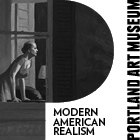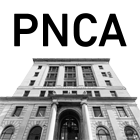
|
||
|
Portland art blog + news + exhibition reviews + galleries + contemporary northwest art
|
||
Monday Links This is an excellent piece on the state of the Dia Foundation with and without Philippe Vergne, whom I consider a better fit for MOCA than the Dia. The Dia was once the country's premier experimental art institution and they championed site specificity better than anyone before or since. It was rooted in the most surprisingly supple aspects of Donald Judd's philosophy, which acted as an antidote to market driven art... providing a patronage platform for integrity driven work. It really hasn't gotten its groove back since Michael Govan left. Frankly, civilization needs an active and relevant Dia that can exist without deacessioning and the new director will need to repair some damage done by such activity.
Michelangelo the forger. Interesting about the way forgers were considered back in the day. No big surprise, the Oregon Arts Commission has lost another 3 officers. Something complicated is at work and there is something in this earlier article. What is missing is transparency at every stop along the line here, especially the composition and mechanisms for being added to awards panels. You can fill out your criteria for the new director here. There was a mention of Portland visual arts in the New York Times this past weekend. It is nice that Portland was being portrayed as an edgy art adventure rather than simply some quirk fest or other regional stereotype (you can find whatever you are looking for here). As I've mentioned before the Crystal Bridges Museum's State Of The Art project is interesting. Will it be a conservative World's Fair type event where regional stereotypes are trotted out? If it is critics will eat it alive but I do believe that the US could benefit from a survey that isn't based in New York, more voices would be healthy when so many cant see beyond the Hudson. The question will be if they can bring out work that has an edge? Does it reflexively interrogate, negate and transcend, rather than merely illustrate genre? IE can it show us something unexpected, not mere novelty but something whose ethos and execution pushes viewers (especially very experienced ones who will judge it) into new place where viewers have to engage it as a challenge? Can State of the Art challenge literally the state of visual art? The Whitney Biennial tends to be a pre-market talent show rather than a challenge to the status quo (that's not really the Whitney's fault either, it is its location's). Can any institution actually challenge the actual state of art these days? I do like the way the State Of The Art curators are looking at threads of US art outside of the commercial system but can they find anything with the frission of originality that goes beyond hero worship or gimmicks? Then there is the lingering subtext of Randy Kennedy's article that hints at an amateur hour... i.e. artists that have never had a studio visit before etc. True, the show needs some out of the blue discoveries to succeed, but I know many of the Portland artists visited have major art world credentials... i.e. shown in major museums, received press in Art Forum and from major critics etc. One artist they visited in Seattle, Suzie J. Lee, is pretty ubiquitous in national/international museums and has had magazine exposure so she's definitely not an amateur hour visit. Overall, the Walmart money behind all this means that the critics and industry insiders will be extra tough on this attempt, but at the same time everyone feels the danger of market driven stagnation (also ultra genre-driven) and is looking for breath of fresh air. I am keeping an open mind, Andrew Carnegie (libraries), J.D. Rockefeller Jr. (MoMA) etc. all found a way to make their money matter by taking on signature projects that were serious and had sophisticated thinking... that is simply what it takes for this project to succeed. Only greatness can justify great fortunes, merely good isn't enough. At least this newly minted museum is committing its own staff to creating this defining show, because lately institutions have taken to using guest curators as a kind of damage control or risk management. It is an inherently conservative impulse that all museums are susceptible to. In this case nothing short of sussing out a few artists worth making the history books will do. Not an enviable task. Here is a thought provoking audio guide and article on the Isa Genzken retrospective at MoMA, one of my favorite artists who most recent MFA's are ripping off... and don't even realize they are doing it. The Brooklyn Rail published a fine article on why the academic game is not played by the same rules the studio game is played by. Thankfully the real world is not so "art school"! Posted by Jeff Jahn on February 10, 2014 at 10:28 | Comments (0) Comments Post a comment Thanks for signing in, . Now you can comment. (sign out)
(If you haven't left a comment here before, you may need to be approved by
the site owner before your comment will appear. Until then, it won't appear
on the entry. Thanks for waiting.)
|
| s p o n s o r s |
 |
 |
 |
 |
 |
 |
 |
 |
 |
 |
 |
 |
 |
 |
 |
 |

|
Site Design: Jennifer Armbrust | • | Site Development: Philippe Blanc & Katherine Bovee | |

